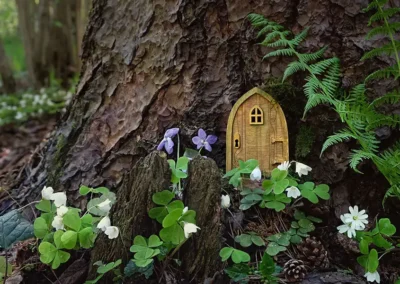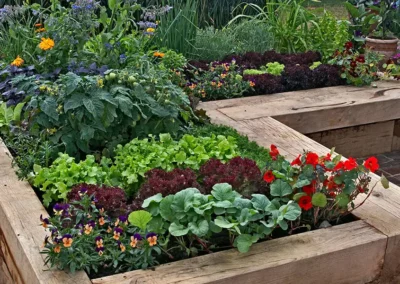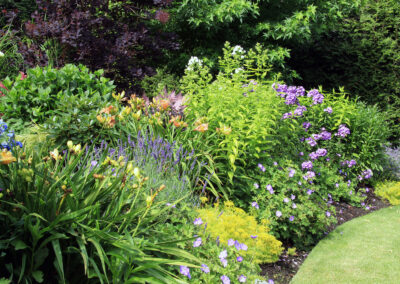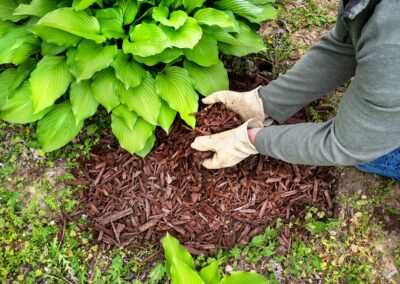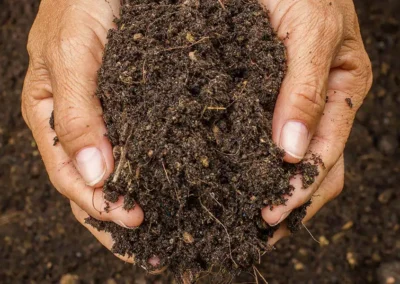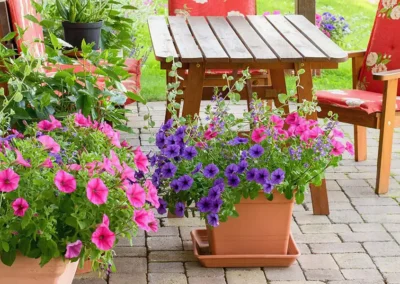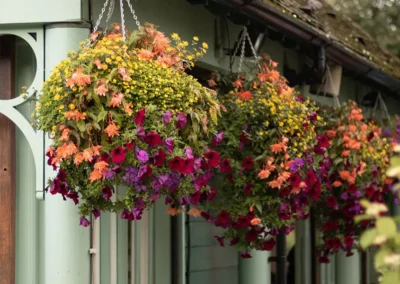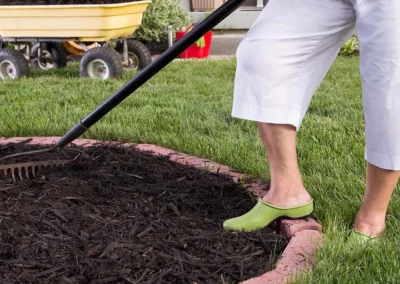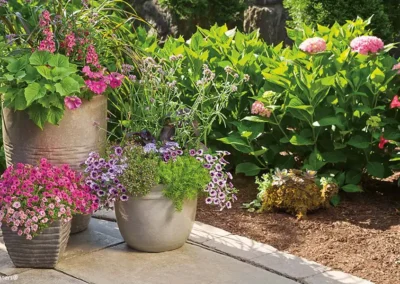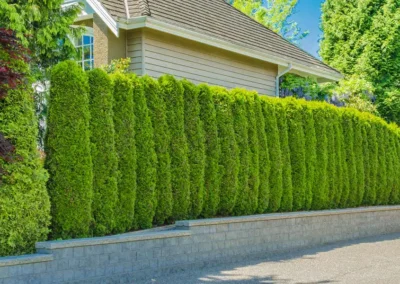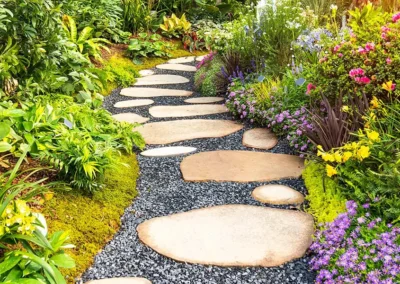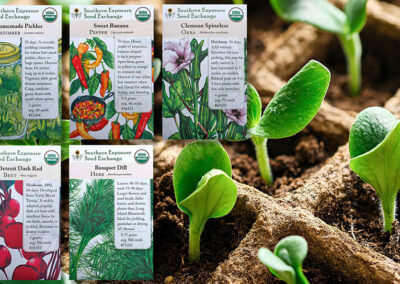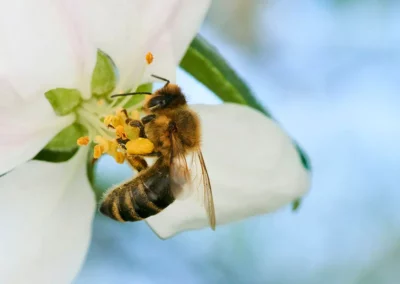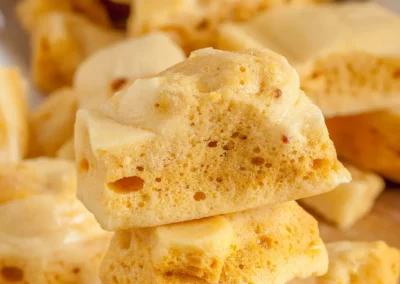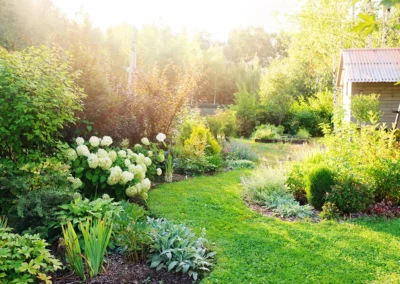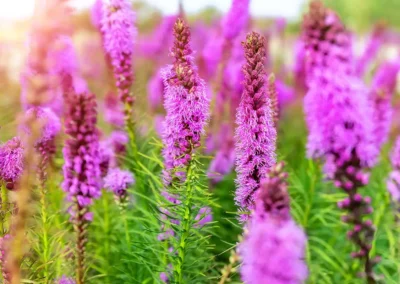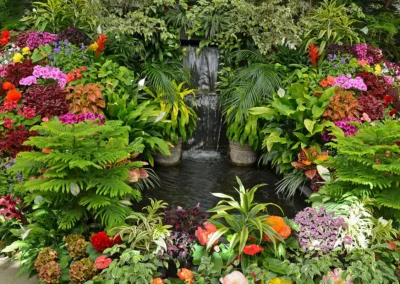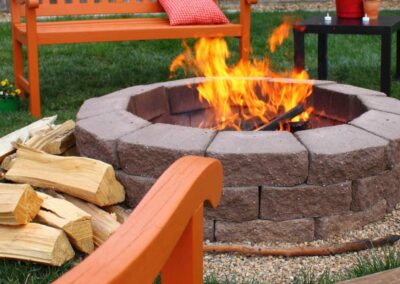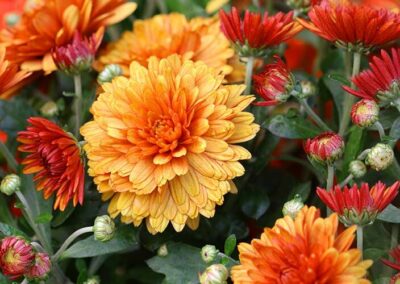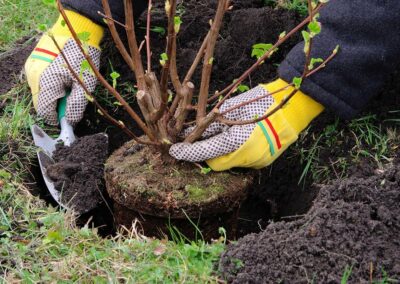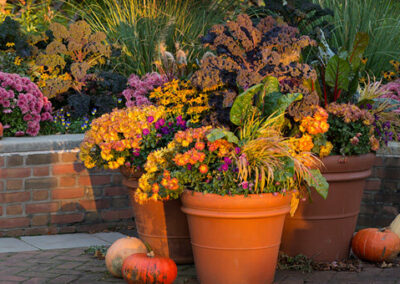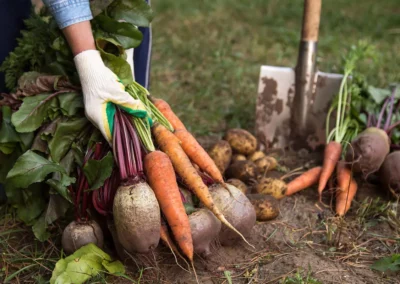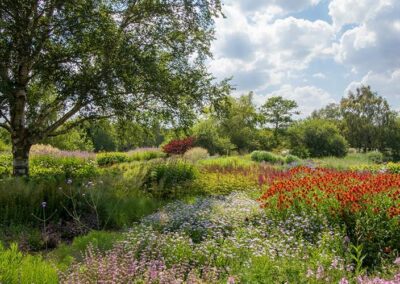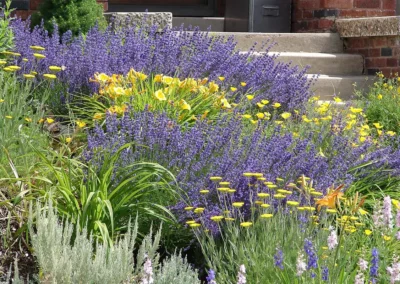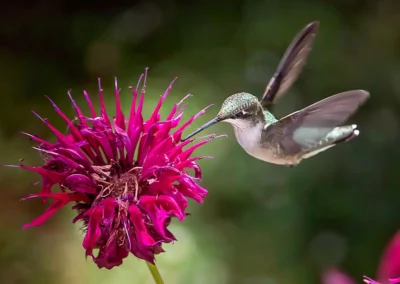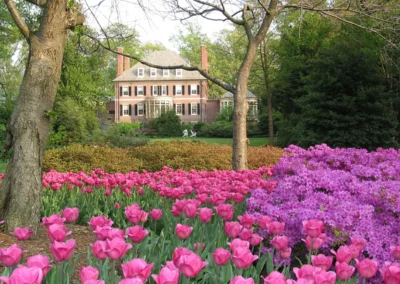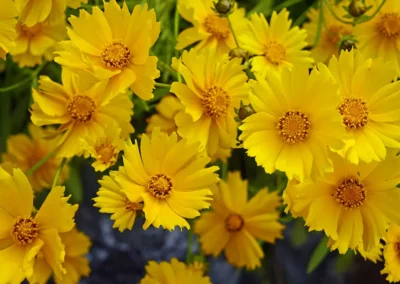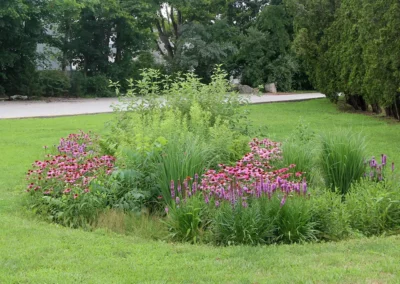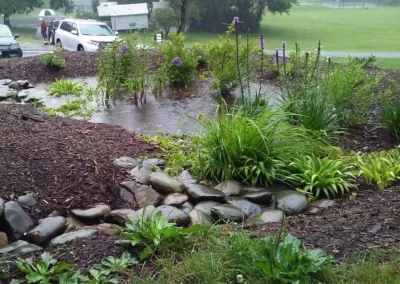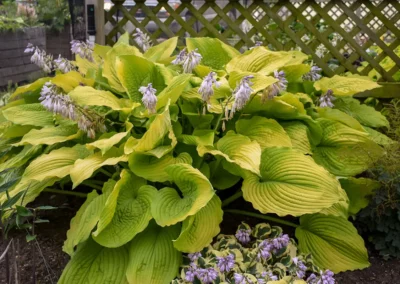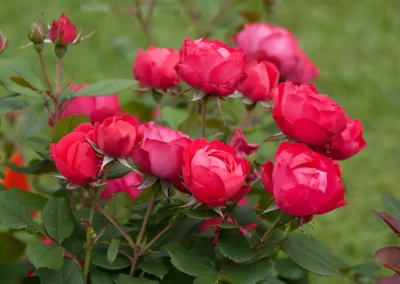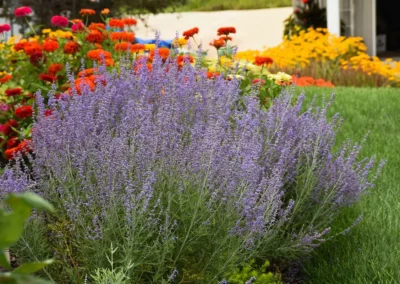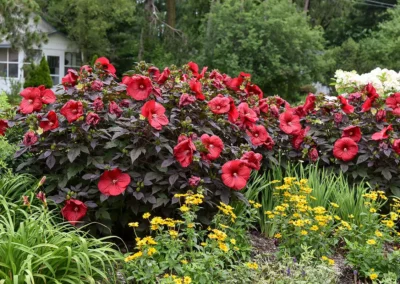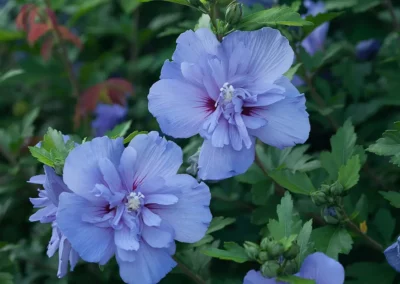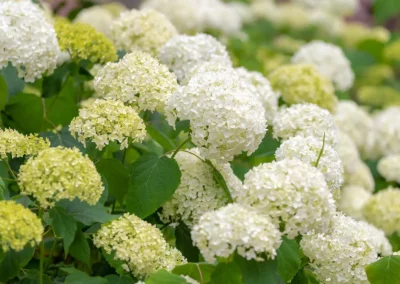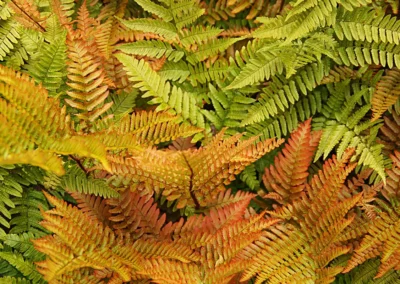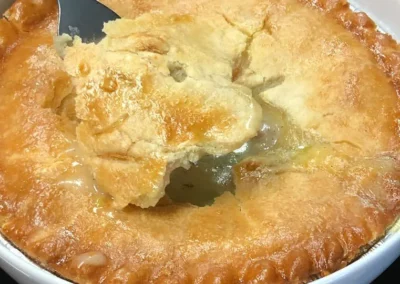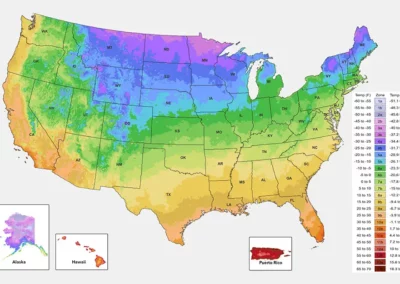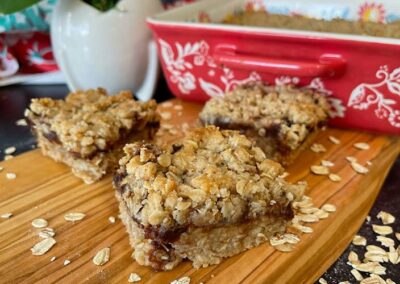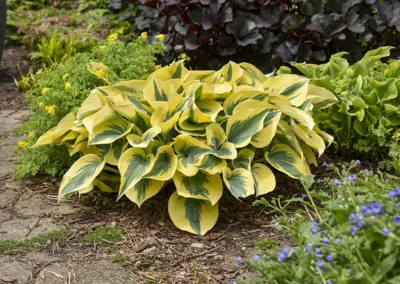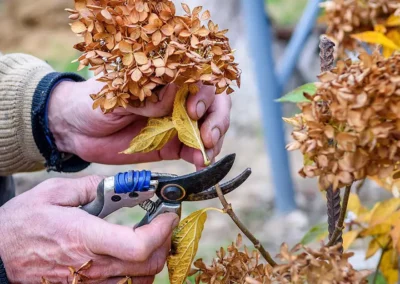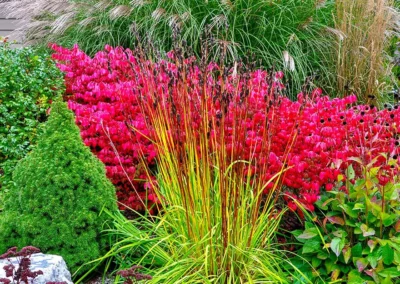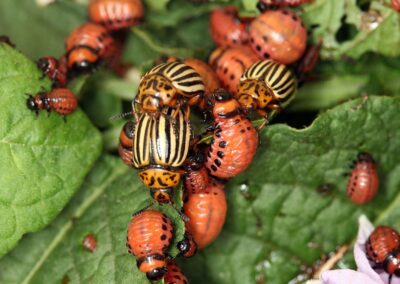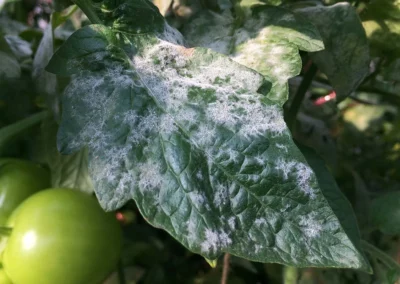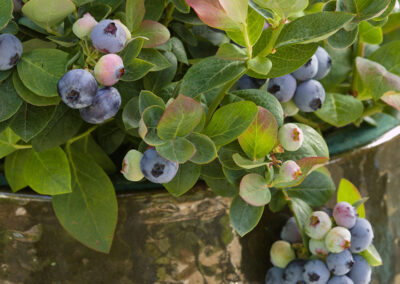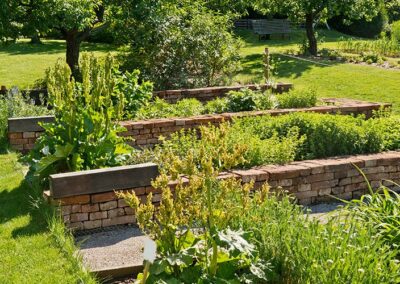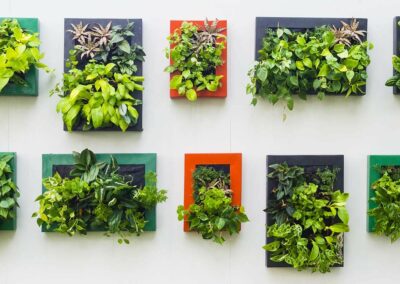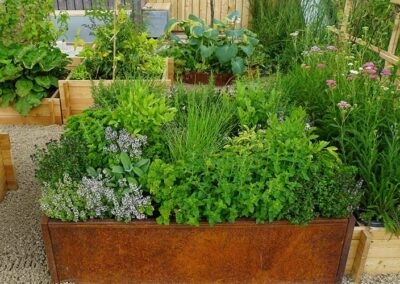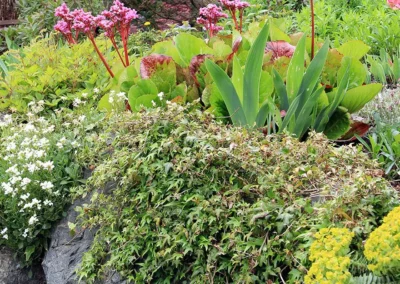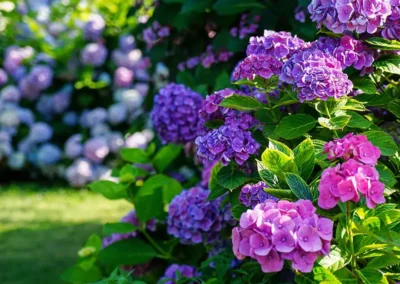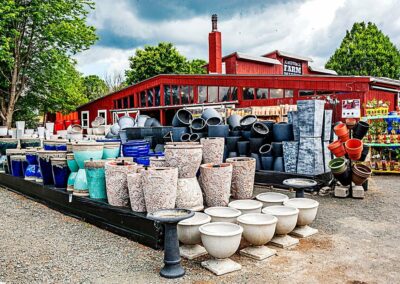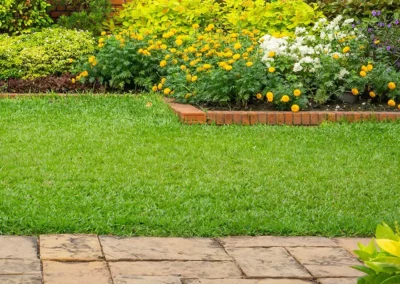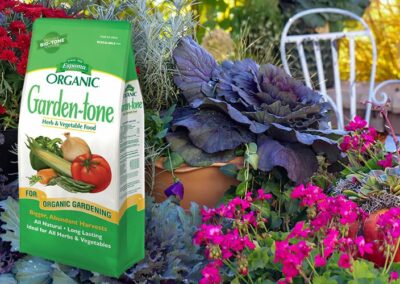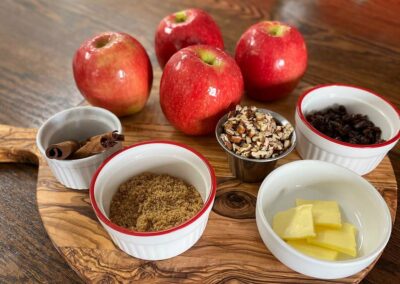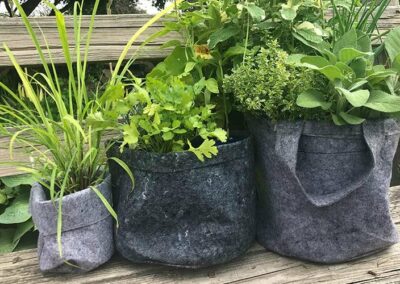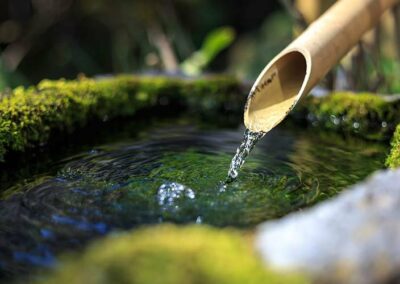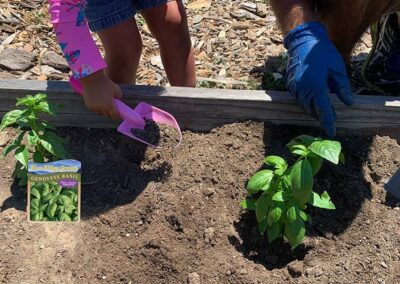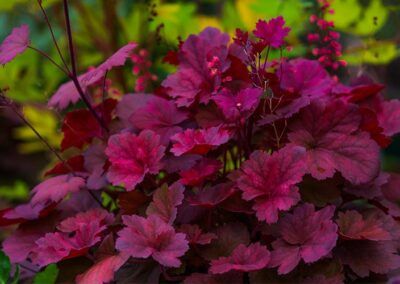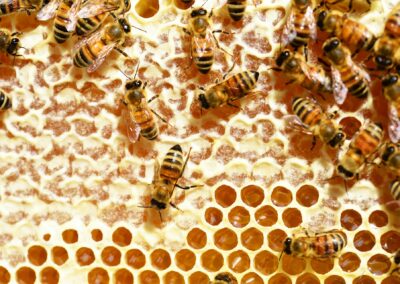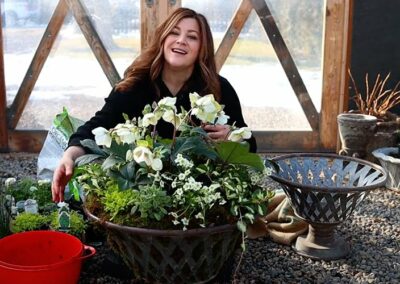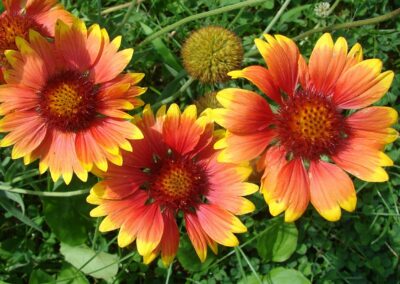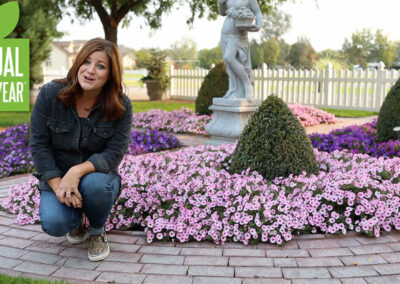Rain storms, anyone? When it’s been a particularly rainy season, there’s a way to turn those gushers into something fabulous…
Have you considered gardening around your downspout?
When you have rainwater rushing into your garden, it can suddenly drench whatever’s there, making the soil soggy and uninhabitable. But it’s also an opportunity to incorporate plants that are adapted to the fluctuating moisture levels at the end of a drainpipe. You can create a beautiful garden that will attract butterflies, bees, birds and other critters, and will also help rainwater be absorbed back into the earth instead of creating massive puddles or being diverted down storm drains.
Think of your downspout garden as a miniature rain garden.
Most rain gardens are started by creating a depression in your yard or by using a natural low spot to collect rainwater. Once you have created or identified the slope, you have to ensure the drainage is right. Depending on whether you have a base of well-draining sandy soil or the opposite (clay), you may have to add more sand or gravel to the bottom of your little rain garden, which is then topped with garden soil.
Also, creating berms around your rain garden will help keep the water in the right area, and can direct it down a particular path when there’s more water than can initially be absorbed.
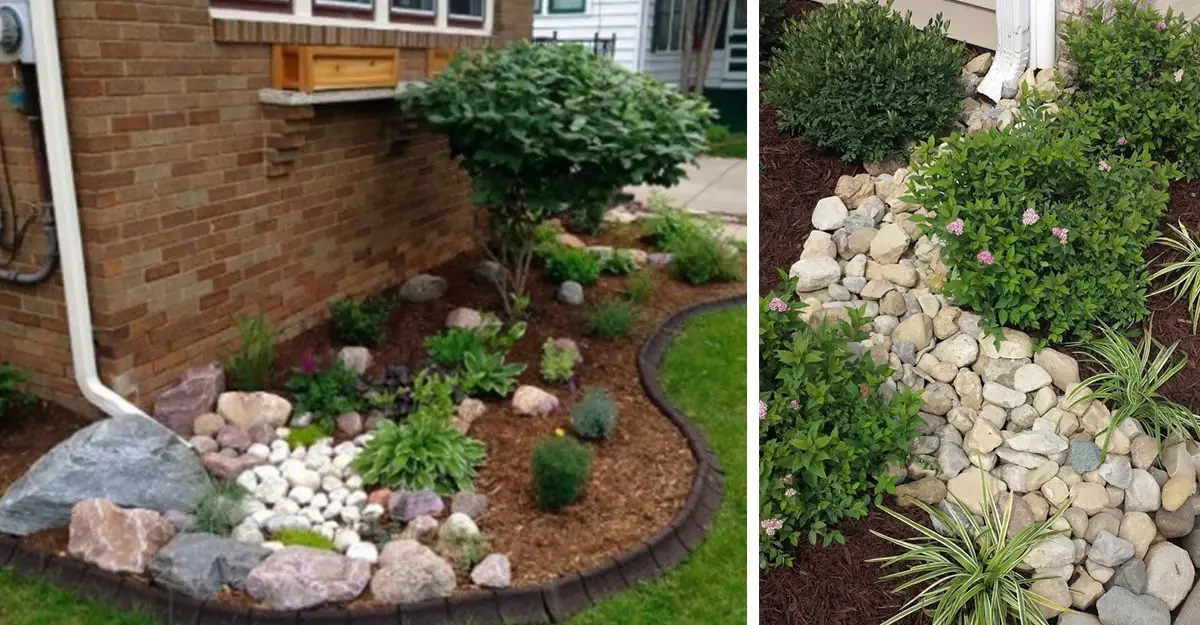
A container can be the perfect frame for your downspout garden.
You can also incorporate a container under your downspout and create a garden inside it. A wine barrel, large ceramic or clay pot, ceramic trough, and galvanized tub can all be used, for a few ideas. Just be sure your container has drainage holes in the bottom and on the sides or near the top for overflow. Add a layer of gravel, and on top of that add a soil mix designed for a rain garden: 50% sand, 25% topsoil, and 25% percent compost.
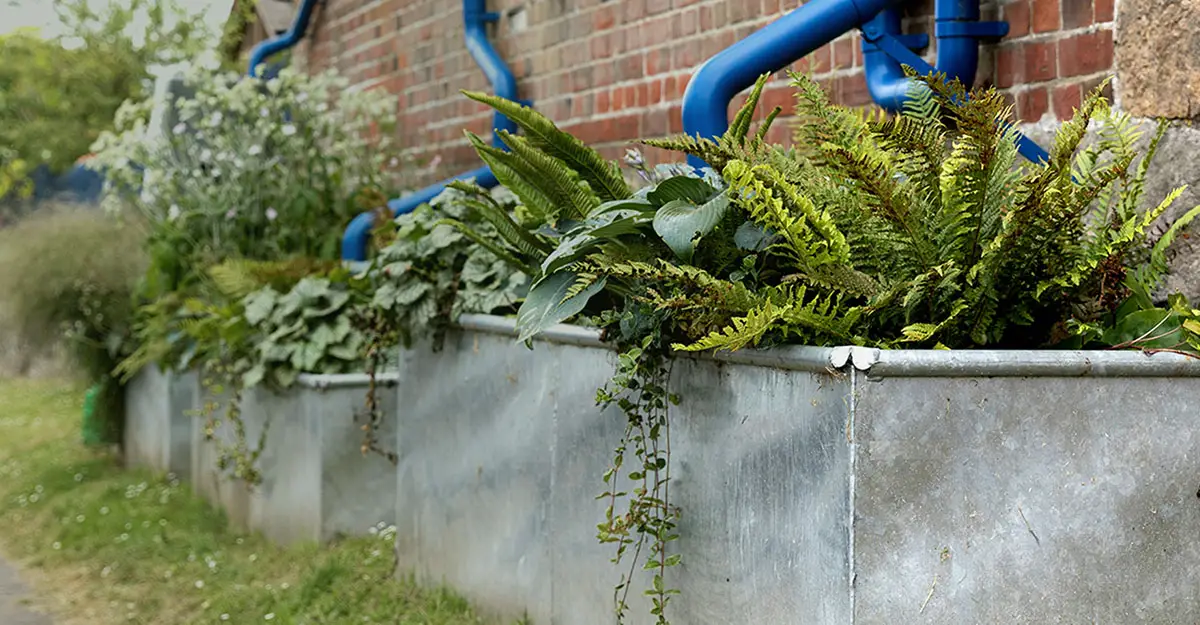
A word about native plants.
While almost any plant with the right moisture requirements will do fine in your downspout garden, it’s never a bad idea to consider native plants. Native grasses, wildflowers and shrubs generally have very deep root systems, sometimes burrowing down ten feet or more.
Also, most native plants cast off their roots annually, growing new roots and providing more soil aeration and pathways for water to flow. And because they’re indigenous, you already know they’ll thrive here in zone 7 and in our soil conditions. See below for a list of native plants suitable for your downspout and rain garden.
How to plant your downspout garden.
When you start placing your plants, put those that can tolerate wetter conditions in the middle or the lowest part of your garden. The plants that can take occasional standing water should be placed around the next level of your garden. The plants that need drier conditions should be placed around the perimeter.
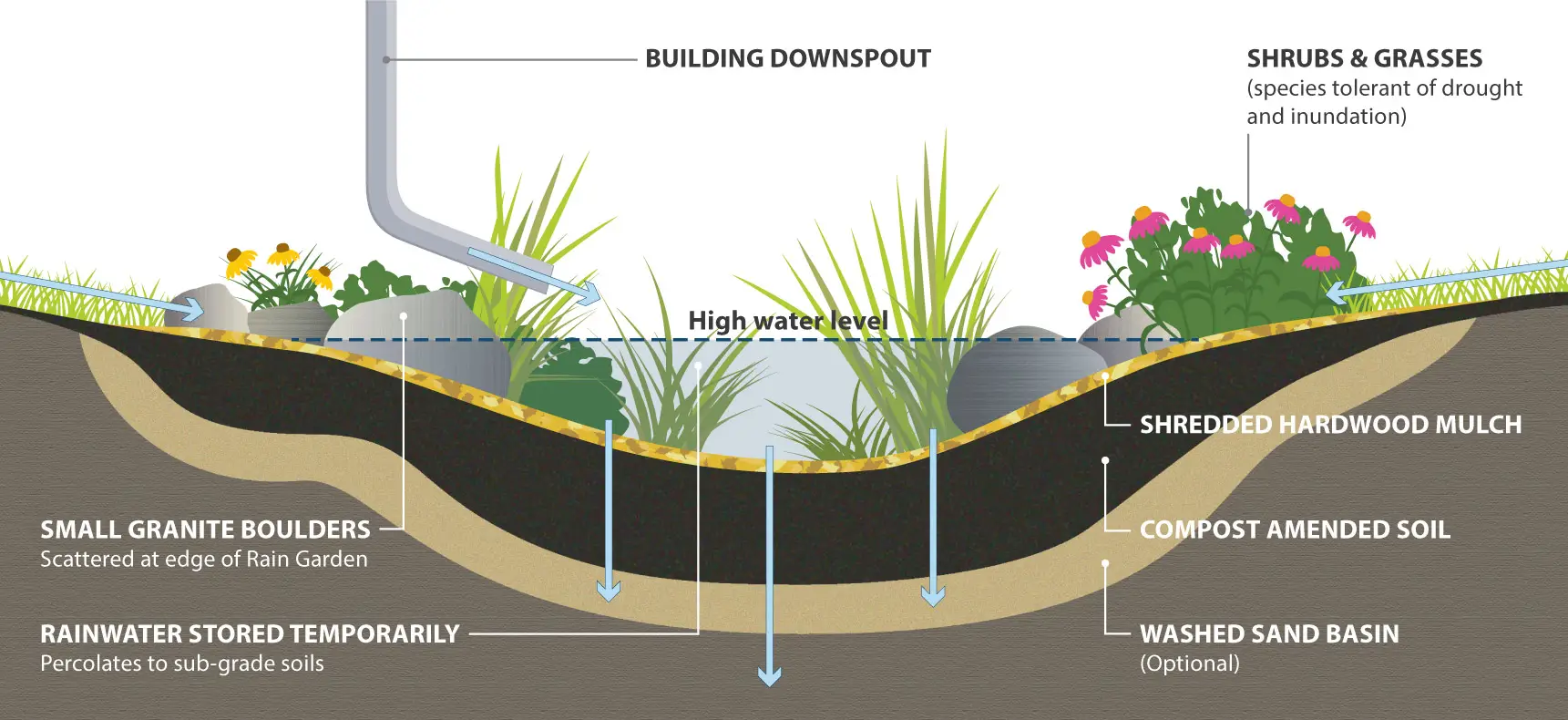
Rain, rain, come my way!
Are you ready to put the water collected from your roof and gutters to work? By allowing the water to slowly filter through your downspout garden, it’s cleaner when it enters the groundwater. This also helps prevent erosion from fast-draining stormwater. That’s a win all the way around, wouldn’t you say?
Your friends at Reston Farm Garden Market are ready to help you find what you need to make your downspout garden a beautiful addition to your outdoor space. Come see us!
Recommended Native Plants for Zone 7 Downspout Planters and Rain Gardens
Native, or non-invasive, drought-tolerant perennials are recommended for downspout planters and rain gardens. These species will be able to tolerate the moisture conditions of these stormwater tools and are also appropriate for managing stormwater runoff.
*Species marked with an asterisk are the most resilient and will require the least maintenance. Source: Rain Check
Full Sun to Partial Sun Perennials
Flowering Perennials
- *Aster oblongifolius – ‘Raydon’s Favorite’ New England Aster
- Aster laevis – ‘Bluebird’ Smooth Aster
- *Agastache foeniculum – ‘Anise Hyssop’ (several varieties)
- Calamintha nepata – ‘White Cloud’ Calamint
- Chelone lyonii – ‘Hot Lips’ Turtlehead
- *Pycnanthemum muticum – ‘Mountain Mint’
- Eupatorium dubium – ‘Little Joe’ Joe Pye Weed
- Filipendula rubra – ‘Venusta’ Queen of the Prairie
- Helenium – ‘Sneezeweed’ (several varieties)
- Hibiscus moscheutos- ‘Fantasia’, ‘Kopper King’, ‘Robert Fleming’, ‘Plum Crazy’ Common Mallow
- Iris ensata – Japanese Iris (several varieties)
- Iris versicolor – ‘Blue Flag’ Iris
- Iris sibirica – Siberian Iris (several varieties)
- *Liatris spicata – ‘Kobold’ Gayfeather
- *Lobelia cardinalis – ‘Cardinal Flower’
- *Lobelia siphilitica – ‘Big Blue Lobelia’
- Salvia nemerosa cv. – Hybrid Sage (several varieties)
- Sedum ‘Autumn Fire’ – ‘Autumn Fire’ Stonecrop
- *Solidago rugosa – ‘Fireworks’ Rough Stemmed Goldenrod
- *Solidago – ‘Little Lemon’ Goldenrod
- *Solidago sphacelata – ‘Golden Fleece’ Goldenrod
- *Vernonia lettermannii – ‘Iron Buttefly’ Narrowleaf Ironweed
Grass Species
- Bouteloua gracilis – ‘Blonde Ambition’ Blue Grama Grass
- Carex testacea – ‘Praire Fire’ Orange New Zealand Sedge Grass‘
- *Juncus effuses – Common Rush Grass
- *Schizachyrium scoparium cv. – Little Bluestem Grass (several varieties)
- *Panicum virgatum – ‘Ruby Ribbons’ Red Switchgrass
- *Panicum virgatum – ‘Shenendoah’ Switchgrass
- *Sporobolus heterolepis – Prairie Dropseed Grass
Partial Shade to Full Shade Perennials
Flowering Perennials
- Aruncus aethusifolia – Miniature Goat’s Beard
- *Aster divaricatus – ‘Eastern Star’ White Wood Aster
- Chelone glabra – ‘Turtlehead’
- Euphorbia amygdaloides var. robbiae – ‘Mrs. Robb’s Bonnet’ Wood Spurge
- *Pycnanthemum muticum – ‘Mountain Mint’
- Hemerocallis cv. – Day Lily cultivar
- Heuchera Villosa – Huechera ‘Autumn Bride’
- *Lobelia cardinalis – ‘Cardinal Flower’
- *Lobelia siphilitica – ‘Big Blue Lobelia’
- Tricyrtis ‘Sinonome’ – ‘Sinonome’ Toadlily
Grass Species
- Carex flacca – Carex ‘Blue Zinger’
- rex appalachica – Appalachian Sedge Grass
- Carex ‘Bunny Blue’ – Glaucous Woodland Sedge Grass
- Carex muskingumensis – ‘Oehme’ Variegated Palm Sedge Grass
- *Chasmanthium latifolium – ‘Northern Sea Oats’
- Sesleria autumnalis – ‘Autumn Moor Grass’
- *Veroniscastrum virginica – ‘Culver Root

